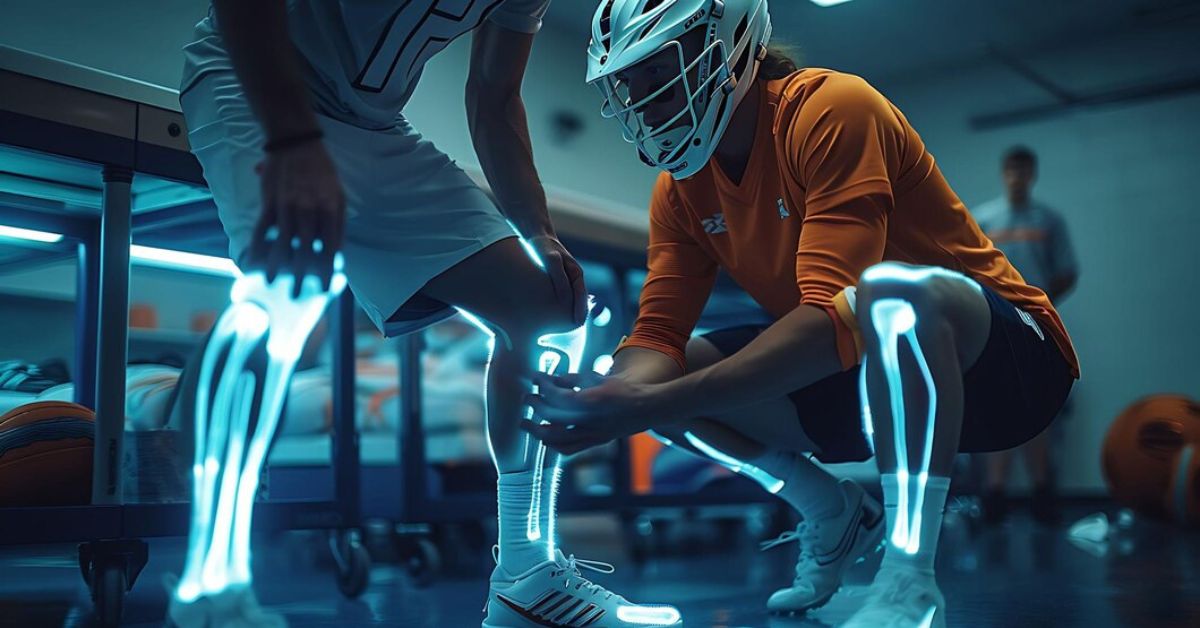From minor sprains to surgery-requiring conditions, sports injuries plague athletes at all levels. While clinical exams and X-rays once dominated diagnosis, MRI has transformed sports medicine. This non-invasive technology offers unparalleled imaging of soft tissues, bones, and organs. Its precision revolutionizes injury assessment, treatment, and recovery monitoring. MRI’s detailed insights surpass traditional diagnostic methods, providing a clearer path to healing.
If you are an athlete seeking peak performance, remember MRI. It proves invaluable in understanding and overcoming your physical setbacks, ultimately benefiting your health and career longevity.
Here’s a quick guide you need to read before searching for “MRI Imaging Near Me.”
Understanding MRI Technology
Strong magnetic fields and radio waves combine to produce MRI’s detailed internal body images. This technique excels at visualizing soft tissues –
- Muscles
- Tendons
- Ligaments
- Cartilage
- Blood vessels
Plus, unlike X-rays and CT scans, MRI offers a safer and better alternative without using ionizing radiation. It reveals hidden issues that other imaging methods might miss, making it a crucial diagnostic tool in sports medicine.
Process of MRI Imaging:
MRI machines create detailed body images through a multi-step process. First, a strong magnetic field aligns water protons in the body. Next, a radiofrequency pulse temporarily disrupts this alignment. Then, as protons realign, they emit signals. The machine captures these signals in real time. Finally, it translates the data into high-resolution, cross-sectional images.
This sequence reveals intricate views of internal structures, providing valuable diagnostic information. The resulting scans offer medical professionals an in-depth look at areas of concern.
Key Benefits of MRI in Sports Medicine
Let’s break down the key benefits that make MRI a game-changer in sports medicine.
1. Detailed Imaging of Soft Tissue Injuries
Soft tissue injuries plague athletes, yet X-rays often miss the mark. MRI steps in, offering crystal-clear views of muscles, ligaments, and tendons. Unlike X-rays’ bone focus, MRI unveils subtle tears and inflammation. Take a torn meniscus—invisible on X-rays, but vivid under MRI’s gaze. This precision guides treatment, tailoring plans to each unique injury.
2. Early Detection of Overuse Injuries
Early detection saves athletes from career-threatening injuries. MRI scans reveal hidden damage before symptoms worsen. Stress fractures and tendonitis lurk silently, evading X-rays until healing begins. But MRI exposes swelling and microfractures instantly. This advanced imaging spots overuse injuries in feet and legs when intervention matters most. Timely treatment prevents minor issues from escalating into severe, long-term problems.
3. Non-Invasive and Safe
MRI offers athletes a safe, radiation-free option for repeated scans throughout their careers. This non-invasive technique proves especially valuable for younger players, who face higher risks from ionizing radiation. Without surgical intervention or injections, MRI painlessly assesses injuries, making it an ideal choice for athletes of all ages seeking comprehensive, risk-free diagnostic imaging.
4. Accurate Diagnosis for Customized Treatment Plans
MRI scans offer precision in medical diagnoses, guiding treatment choices with clarity. These detailed images inform doctors whether to prescribe physical therapy, rest, or surgery. Sometimes, MRIs reveal that conservative approaches suffice, sparing patients unnecessary procedures. By illuminating injury specifics, MRIs empower healthcare providers to craft tailored recovery plans, ensuring optimal patient care and outcomes.
5. Monitoring Healing and Recovery
When athletes recover, MRI scans track their progress. These images reveal healing status, lingering inflammation, and potential new issues. Doctors use this information to fine-tune rehabilitation plans and determine safe return-to-play timelines. By monitoring injury resolution, MRI helps prevent re-injury and ensures optimal recovery. This vital tool adapts treatment strategies based on individual healing rates, keeping athletes’ comebacks on course.
Common Sports Injuries Diagnosed with MRI
MRI is great for spotting many sports injuries, especially in soft tissues. Here are common injuries MRI can detect.
1. ACL and Meniscus Tears
Knee injuries plague athletes in high-impact sports. Soccer players, basketball stars, and football pros often face ACL tears and meniscus damage. These crucial structures stabilize the joint and absorb shock. When disaster strikes, MRI technology comes to the rescue. Its detailed scans reveal the full extent of ligament and cartilage trauma. Armed with this visual intel, doctors craft tailored treatment plans. Some athletes require surgery, while others heal through intensive rehab. Either way, the road to recovery begins with a clear picture.
2. Rotator Cuff Tears
Overhead athletes risk rotator cuff damage. Swimmers, tennis pros, and pitchers strain these vital shoulder muscles. MRI scans reveal tendon tears and inflammation with precision, offering a clear picture of the joint’s condition. This imaging technique helps diagnose issues in the complex shoulder area, guiding treatment for injured athletes.
3. Muscle Strains and Ligament Sprains
Sports-related muscle and ligament injuries often heal with rest and rehab. MRI scans reveal damage severity when conservative treatments fail, especially for persistent strains and sprains. This imaging technique proves valuable in assessing stubborn sports injuries that defy typical recovery methods.
4. Tendonitis and Tendon Tears
MRI reveals inflammation and tears in tendons like the Achilles, aiding diagnosis and treatment. These injuries stem from overexertion or abrupt, powerful motions. By capturing detailed images, MRI guides doctors in pinpointing damage caused by repetitive stress or sudden strain, enabling targeted care for tendon issues.
5. Cartilage Injuries
MRI reveals cartilage damage in crucial weight-bearing joints. Athletes rely on this diagnostic tool to safeguard their knees and ankles. Peak performance demands intact joints, making early detection vital for these high-stakes competitors. MRI scans offer a window into joint health, guiding treatment and preserving athletic careers.
Conclusion:
All in all, athletes greatly benefit from precise treatment plans based on detailed MRI scans. The technology also tracks healing progress, boosting confidence during recovery. For professionals and amateurs alike, MRI accelerates the return to play. Its safety and effectiveness have transformed injury management in sports. In an arena where peak performance is crucial, MRI stands out as a pivotal advancement.
If you are ready, check out Care Scan https://www.carescan.com.au/mri-scan/ instead of wasting time by Google searching ‘MRI Imaging Near Me.’
